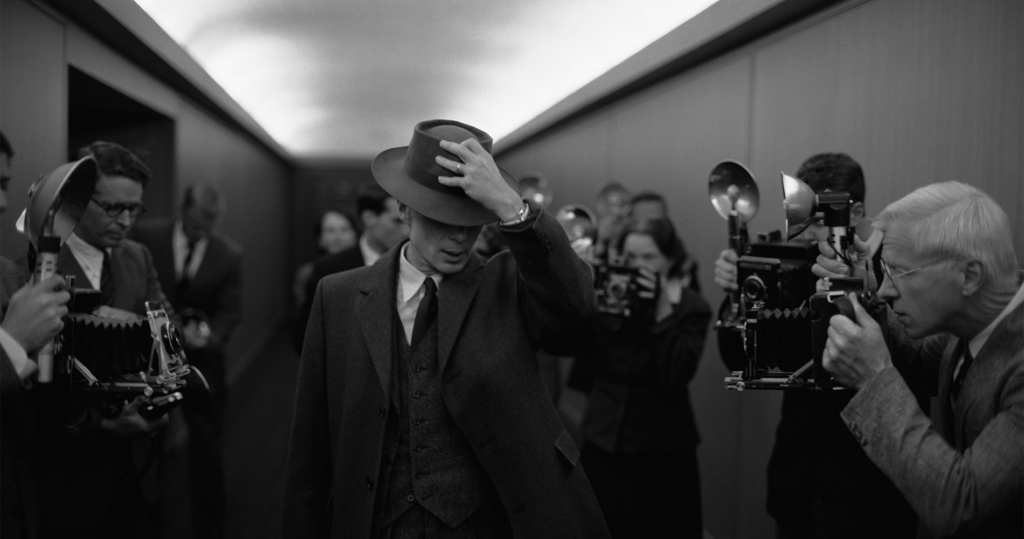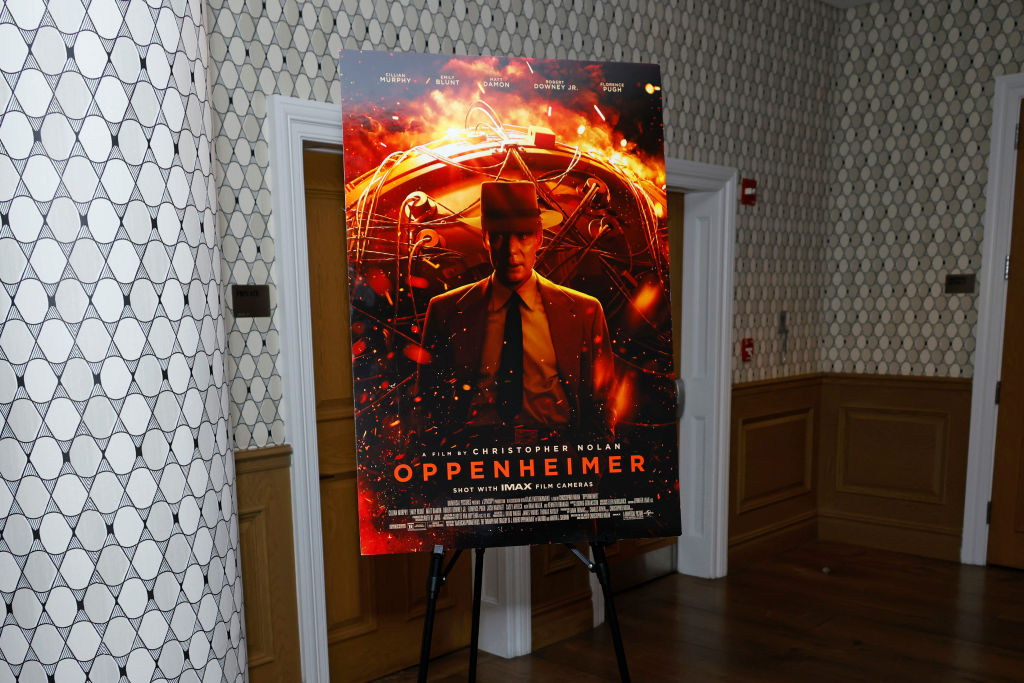How Did Best Picture Front-Runner ‘Oppenheimer,’ With All-White Cast, Get Past ‘Diversity, Equity and Inclusion’ Quotas at the Oscars?
‘The first year of these standards, we are going to have the most white male best picture winner since maybe ‘Spotlight’ in 2016,’ a Hollywood journalist, Matt Belloni, says.

“Oppenheimer,” the blockbuster biopic about the Jewish physicist who fathered the atomic bomb, Julius Robert Oppenheimer, is widely considered to be the front-runner for Best Picture at the Academy Awards next month. This is raising questions about the effectiveness of the Academy’s new diversity mandates, which exclude films from eligibility for the coveted Oscar if they don’t meet strict racial and gender quotas.
The critically acclaimed film, which surprised Hollywood by grossing a billion dollars at the global box office, has an all-white cast. This makes sense, as the period picture depicts the rush to build the atomic bomb, which was secretly constructed by an all-white, overwhelmingly Jewish and male group of scientists working in isolation in New Mexico.
The road to the Oscars of “Oppenheimer” comes during the first year when the liberal Academy, reeling from the so-called #oscarsowhite movement that started in 2015, has imposed a strict “diversity, equity and inclusion” policy. No film that doesn’t meet a complex rubric of racial and gender quotas, described later in this report, is eligible.
Nonetheless, diversity boosters are continuing to criticize Hollywood and the Academy, noting that if a film as white-centered as “Oppenheimer” can somehow meet these standards, the diversity mandates must have no teeth.

“The first year of these standards, we are going to have the most white male Best Picture winner since maybe ‘Spotlight’ in 2016,” an influential Hollywood journalist, Matthew Belloni, remarked on his Puck podcast “The Town” on Thursday.
The success of “Oppenheimer,” the founder of the University of Southern California’s entertainment diversity program known as the Inclusion Initiative, Stacey Smith, complained on Mr. Belloni’s podcast, demonstrates that the mandates are merely “performative actions that help people think they have made a step forward or made a change, when really it is another dance not thinking substantively about these issues.”
Ms. Smith, who describes herself as a social scientist at USC, says the Academy’s highly complex diversity requirements offer enough options that anyone can meet them with a little creativity. She elaborated that somewhere north of 85 percent of the American Film Institute’s Top 100 Movies list would meet the Academy’s standards, despite Hollywood being hammered by left-wing interest groups for many years over diversity issues.

When asked about what the academy should do, Ms. Smith said that “women, women of color” do not receive “the financial support” in the film industry to the same degree that “white men do.” Ms. Smith cited a study in which she claimed that there is a “deficit” in funding going toward women of color in the film industry amounting to $19 billion.
It is unclear if the study that Ms. Smith referenced accounted for the difference in population sizes, as the population of white men in America, around 31 percent, is five times larger than that of African-American women.
The Academy Awards, known colloquially as the Oscars, rolled out the new diversity mandates in spring 2023. They are “designed to encourage equitable representation on and off the screen to better reflect the diverse global population.”
To be eligible for the vaunted Best Picture Oscar, the organization requires that films meet two of the four criteria, named “On-Screen Representation, Themes, and Narratives”; “Creative Leadership and Project Team”; “Industry Access and Opportunities”; and “Audience Development.” This would allow a film with an all-white cast to still meet the diversity quotas by having a certain percentage of women and people of color working behind the scenes.

Each criterion mandates a different aspect of the film’s production, including the cast, production team, distributors, and senior executives, to meet quotas for the amount of representation from “underrepresented groups.”
The criteria for cast require that “Lead or significant supporting actors” be “from underrepresented racial or ethnic groups,” a “General ensemble cast” with “at least 30% of all actors” in background roles being at least two different “underrepresented groups,” and a “Main storyline/subject matter” requirement that the film be “centered on an underrepresented group(s).”
As a user on the social networking site, Reddit, noted, “Oppenheimer” meets the standards because its executive producer, Thomas Hayslip, is Asian, and its costume designer, Ellen Mirojnick, is female. At the same time, its distributor, Universal Pictures, is deemed sufficiently diverse because the organization has an African American president of domestic marketing, Dwight Caines, and a female president of distribution, Veronika Kwan Vandeberg.
Overall, this year, of the 10 nominees for Best Picture, seven have overwhelmingly white casts and white lead actors. The exceptions are “American Fiction,” which has a Black lead actor; “Killers of the Flower Moon,” which has several Native American actors; and ‘Past Lives’ which has a largely Asian cast. Those three films are not considered to be serious contenders to win. However, a “Flower Moon” star, Lily Gladstone, who is Native American, is widely considered the front-runner for Best Actress.

